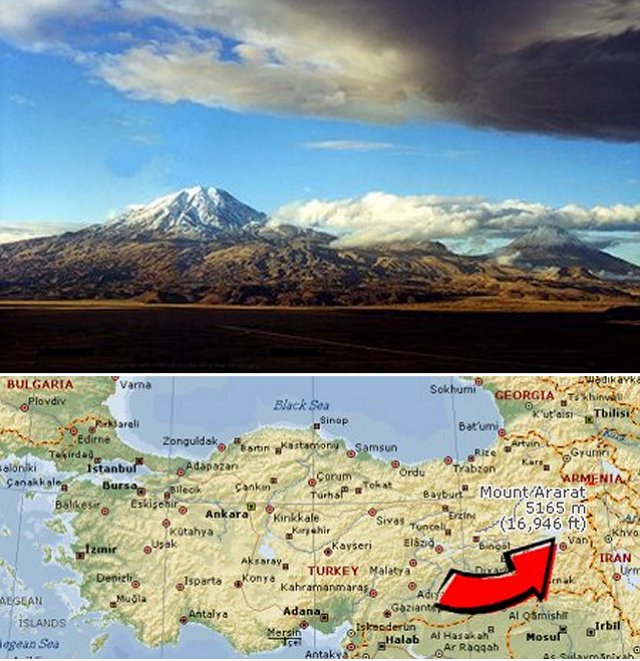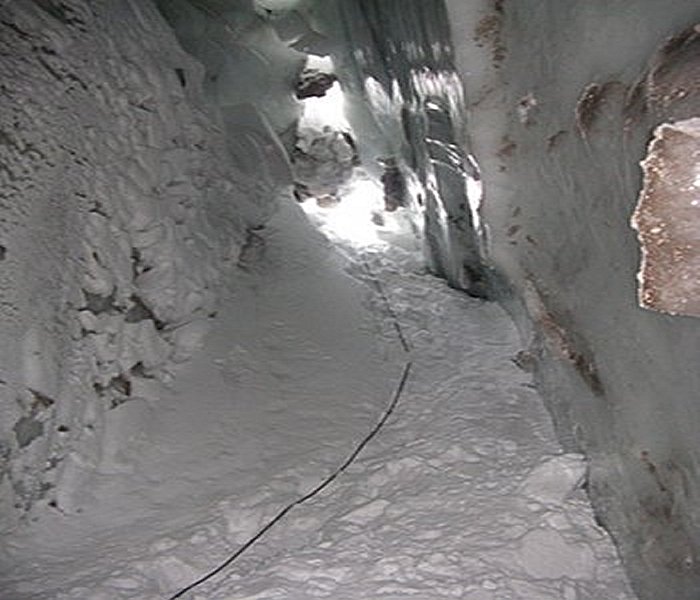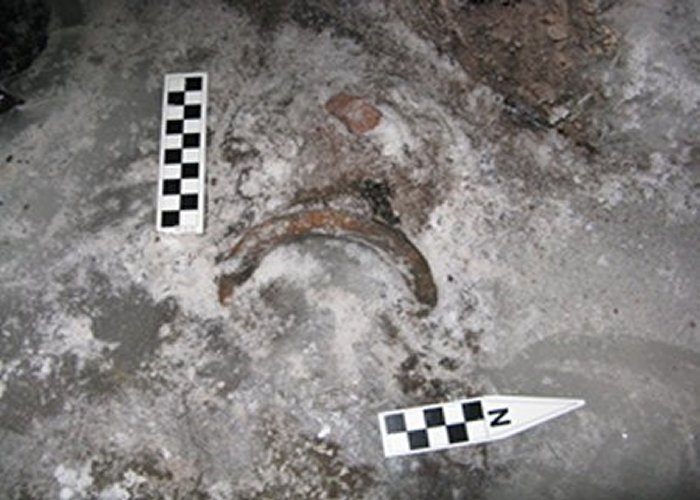Search For Noah’s Ark Continues – The ‘Inside Mount Ararat’ Research Project
Jeroen Rensen - AncientPages.com - In June 2014, AncientPages.com published the article Enigma Of Mount Ararat - Researchers Are Determined To Reveal The Truth To The World which describes how a team consisting of Turkish, Dutch and Belgian members launched an expedition on Mount Ararat, Turkey and found at an altitude of 4.000 meters remains of a possible wooden structure and also pottery.
I would now like to give all readers a deeper insight into the ongoing investigation of material remains at high altitude on Mount Ararat, Turkey.
Mount Ararat, or Ağrı Dağı as it is locally known, lies in the east of Turkey not far from the border with Armenia and Iran. Although a lot of people climb the flanks of this ancient volcano every year it is not mountaineering or tourism that it is famed for.
For centuries now this mountain has been named as the place where the Ark of Noah came to rest when the waters of the flood receded.
Opponents of this theory point to the fact that, assuming there was an Ark, contrary to popular belief the original text on which the biblical account was built does not mention Mount Ararat specifically. It would be more accurate to speak of 'the mountains of Ararat', 'Ararat' being spelled as 'rrt'.
In which case 'Ararat' can be read as Urartu, an ancient kingdom contemporary with, and for a time a serious challenge to, the Assyrians.
Mount Ararat is however located within the territory that Urartu occupied. A second point that is brought up is that the account of Noah is a younger version of the much older Babylonian story of Utnapishtim as encountered in the Gilgamesh Epic. According to this story Utnapishtim and his wife survived the flood brought on by the god Enlil, building an Ark to preserve other living things. Although their survival was not intended by Enlil, Utnapishtim and his wife were blessed by the god and rewarded with eternal life.
This story would have been known throughout the region and was changed and adapted over the millennia into the biblical account we know today.
Over the years multiple expeditions have set out to search for evidence of the Ark on the slopes of the mountain. But no successes were ever claimed.
Until a few years ago when in 2009 a Hong Kong based Christian group called Noah's Ark Ministries International (NAMI) claimed to have located and examined wooden remains at high altitude on Mount Ararat that could only have been, in their opinion, parts of the Ark.
They provided video evidence of their climb up to around 4.900 meters which showed large rooms with wooden walls and floors. However, their claims were quickly discredited by the scientific community at large. NAMI was amongst other things accused of faking the video material, tampering with the dating of samples and stealing objects. Although, it must be said, it is hard to steal objects if the video material was faked in the first place.
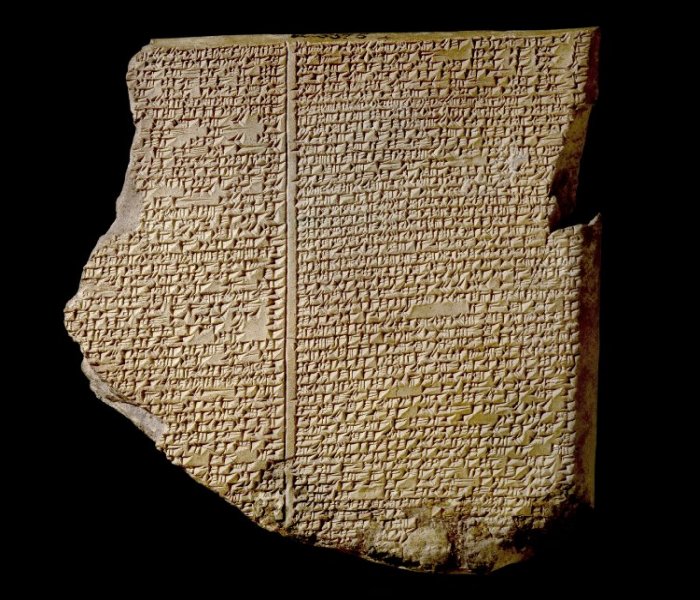
The eleventh tablet of the Gilgamesh Epic found during excavations at Nineveh, telling the story of Utnapishtim. Now at the British Museum, London. Picture by J. Rensen.
Why then, would anyone want to continue research on Mount Ararat?
The NAMI material has been the most controversial of the different expeditions that explore the slopes of Mount Ararat.
By making such a huge claim, and the badly carried out research upon which it was built, they opened themselves up to all manner of critique and were not able to defend themselves properly.
All opinions that were voiced after the initial publication of their results, either in defence of NAMI or denouncing them, were based solely on the NAMI material.
No other expedition has gone back to the locations that they visited. No scientist has seen with his or her own eyes what the NAMI video showed. This gave rise to the question whether there were any wooden remains at all on the mountain.
In 2013 a new expedition initiative was started. This time the goal was not to search for the Ark but to see what was really on that mountain.
Were there wooden remains at high altitude? If so, what was it once part of? Who built it, and when was it built?
The goal was simply to verify the claim of wooden remains. A location, different from the NAMI expedition, at approximately 4000 meters was visited and documented, no samples were taken. Although days of extremely bad weather accompanied by heavy snow and winds hindered the expedition it was verified that within a fissure in the glacier wooden planks had been placed against the sides to form what appeared to be walls. Snow and ice that had formed in the fissure made it difficult to see but at least one floorboard was partly uncovered. Furthermore, two pottery vessels were encountered lying on the floor. No specific measurements or description could be made of the vessels as they were for the most part covered by a layer of ice. It was deemed unwise at that time to remove the ice by force in fear of damaging the vessels and losing valuable information.
Approach and methodology
Research questions
The results of the March 2014 expedition was enough of an incentive to have a new expedition planned for later this year (early August with any luck). However, for now the aim is to climb to the sites that have been reported by NAMI.
The main research goal is to accurately map the location(s) and document all the remains that are found. The question of whether there are any wooden remains at all on Mount Ararat has been answered. But so many questions still remain. The main question to be answered now is: What type of site(s) do the remains at the location(s) represent? To answer this several other questions must be answered as well per individual location:
To what period or periods can the remains be dated?
What are the dimensions of the site?
How has it been built? If a specific construction technique can be distinguished, what is it?
What was the purpose of this location, why has it been built here?
What type of objects are present at each location and what are they made of? What can be learned from the placement of these objects, what is the specific context?
Are there any indications at the location(s) or with the encountered objects to identify the group of people that have built and/or used this site? If so, what do these indications look like and to who do they point?
Focus of research
In order to answer these questions the research in the field will mainly focus on three disciplines: archaeology, geology, and the 3d mapping of the location. Through the use of these three complementing disciplines it is believed the most useful information can be extracted from the location to accurately answer the posed questions.
Archaeology will be important because of the possible encounter of stratigraphic build-up of soil layers caused by human interactions at the site. Although, it must be said, actual excavation is not part of the coming expedition. Furthermore, the familiarity of archaeologists with the documenting of objects through drawing, measurements and description will be invaluable.
Geological research can gain insight in the formation of the location. For instance by making clear whether it is man-made or a natural formation.
If there are any geologically stratigraphic indications that can point towards a (relative) dating then these must be recognised and documented properly.
See also:
Mysterious Lost Kingdom Of Urartu And Its Enigmatic History
The implementation of 3d laser scanning technology will be a great tool for providing a detailed and precise map of the site. This will in turn greatly enhance the ability to understand what the site looks like, both for scientific third parties as well as the public in general. In the long run such 3d maps can be of value when trying to establish possible connections between different locations. This non-invasive research also ties in well with site preservation.
At the last, although a lot of possible disciplines are not part of the current focus it must be mentioned that other specialists will be approached when and if any encountered objects make this necessary.
Team size
The expedition will consist of a relatively small team. First of all, site preservation is important. Having a large team in a small enclosed area will only do more harm than good. Secondly, based on previous experiences it is not wise to have a large body of people in what is basically a cave of which the walls are held together by ice. This goes as well for the noise made by larger groups. Keeping all noise to a minimum makes for a better working environment.
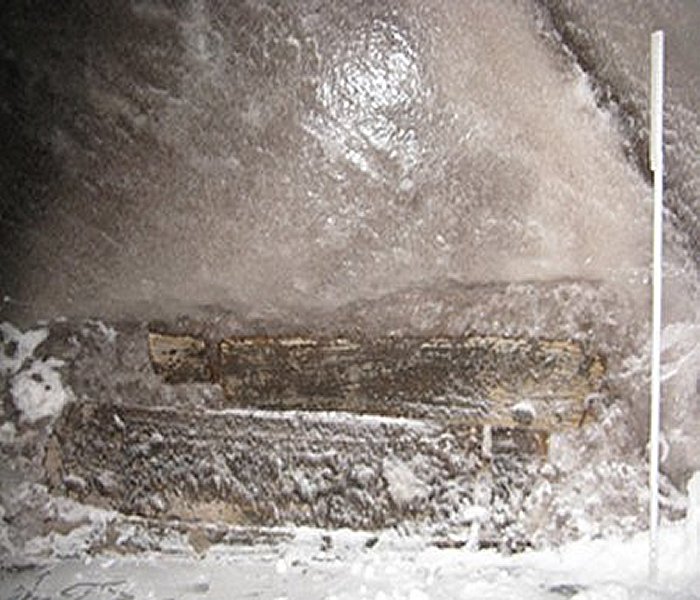
Wooden planks on the west side of the fissure. Measuring stick length is 1 meter. Picture by J. Rensen.
In total the scientific part of the expedition will consist of two archaeologists, one geologist, and a two person crew for the scanning. This will keep the amount of people having to visit the site to a minimum while having enough experts together to ensure on-site discussion and fresh insights.
In addition to these a single cameraman will accompany the expedition to record everything from the journey up and the work in the field to everyday life at basecamp.
From the journey towards basecamp and onwards the expedition will be led by several experienced local guides.
Equipment
The expedition will use both high-tech as well as low-tech means of research. The most noticeable high tech equipment is the use of a 3d laser scanner. Apart from this most other equipment will by necessity be easy to carry up to the site. Handheld GPS and laser distance meters will be part of the standard equipment.
However, although much can be done through the use of technological advances it is very important to also have low tech equipment available. For instance, the archaeological research will also use the traditional methods of drawing and manually measuring dimensions of the different objects. Past experience teaches that not all electrical equipment can stand the conditions that can be encountered at high altitude on Mount Ararat.
Sampling
Although the taking of samples would be of immense value, the fact whether or not it will be possible depends on two factors:
1) A permit to take samples down from the mountain.
2) The correct method of off-site preservation of any sample or object must be guaranteed.
If one of these two cannot be done then no samples will be taken nor any object removed from the site. All research will then take place at the site itself. Which can be done, specifically with the posed questions in mind, although not ideal.
If the taking of samples is possible then the focus will be on:
- a) Pottery.
- b) Wood remains.
- c) Organics, such as plant remains (possible grasses, grains, seeds etc.).
- d) Other objects, may also be made of organic material such as wood, bone, leather etc.
Importance of investigation
The shadow cast by NAMI's claims reaches far and it must be stated firmly that the current research does not attempt to discover the Ark, or is even searching for any such structure. It has been set up around a very simple question that any curious person would ask: What kind of remains are there on the slopes of Mount Ararat? In the past claims have been made, opinions voiced, arguments raised and counterpointed but the fact still remains that for now not much is known with any certainty. It is this uncertainty that makes it so important to investigate further.
The goal of properly researching the alleged sites brings with it one obvious risk. What if the expedition finds that indeed NAMI faked their video material and that there is nothing to investigate? This in itself would be a research result, although not the one that is aimed for. If this should occur then the focus will switch to the location visited in March 2014. Both research methodology and questions are applicable to that specific site.
See also:
Sumerian King List – Ancient Record Of Kingship That Has Long Been Of Great Interest
Shamash: Mesopotamian God Of Sun, Truth, Justice And Healing
Kudurru Of Melishihu – Stone Records From The Kassite Dynasty In Babylonia
Most questions will only get answered after all the retrieved information has been thoroughly examined and maybe not all the raised questions can get a definitive answer. But whatever the results are we must be careful in assuming that what is found will be indicative for all the reported locations with material remains on Mount Ararat. The possibility remains open that not all locations have been built and/or used contemporaneously.
Another option, and a question that has been raised by many, is the fact that the wooden remains may be of very modern date. In that case there are two options. First, the remains are modern but of a genuine structure. Second, it is modern because it is a hoax. But whatever is found and what the conclusions may be it will give all those interested an answer.
Maybe it will not be the answer that was expected or hoped for but if the research is carried out in the proper manner and the conclusions are based on solid arguments then the answer will have all the more value for everyone involved.
Written by Jeroen Rensen - AncientPages.com Contributor
About the author: Jeroen Rensen - holds a Master Degree in Archaeology- specialization tracks: Near Eastern Archaeology and Field Archaeology, Leiden University 2012. Following the clue of a wood structure found on high elevations of Mount Ararat in 2009 by a Hong Kong based Christian group NAMI, who claimed it being the Ark of Noah in the Bible, Jeroen Rensen and Belgian medical Dr. Marcel Verheyen, intrigued, set foot on the legendary mountain in March 2014. Now he and his team are determined to conduct a thorough multi-disciplined research with the participation of more scientists.
Copyright © Jeroen Rensen - AncientPages.com
More From Ancient Pages
-
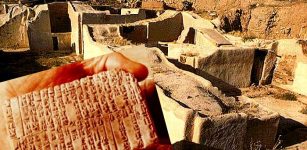 Mysterious Ancient City Of Ebla That Existed Thousand Years Before Biblical Kings David And Solomon
Biblical Mysteries | Aug 14, 2015
Mysterious Ancient City Of Ebla That Existed Thousand Years Before Biblical Kings David And Solomon
Biblical Mysteries | Aug 14, 2015 -
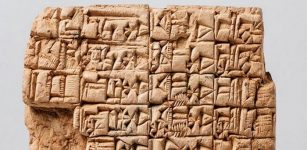 New AI Technique Will Help To Decode Long Lost Languages Of Ancient World
News | Oct 21, 2020
New AI Technique Will Help To Decode Long Lost Languages Of Ancient World
News | Oct 21, 2020 -
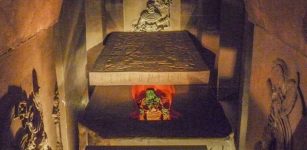 On This Day In History: Pakal Ascends The Throne Of Palenque At Age Of 12 – On July 29, 615
News | Jul 29, 2016
On This Day In History: Pakal Ascends The Throne Of Palenque At Age Of 12 – On July 29, 615
News | Jul 29, 2016 -
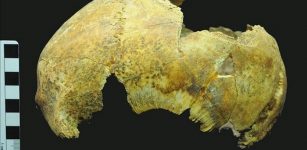 5,000-Year-Old Russian Skull Offers Evidence Of Brain Surgery Made With Stone Scalpel
Archaeology | Oct 23, 2020
5,000-Year-Old Russian Skull Offers Evidence Of Brain Surgery Made With Stone Scalpel
Archaeology | Oct 23, 2020 -
 On This Day In History: Sweden Declares War On Its Ally The United Kingdom – On Nov 17, 1810
News | Nov 17, 2016
On This Day In History: Sweden Declares War On Its Ally The United Kingdom – On Nov 17, 1810
News | Nov 17, 2016 -
 Never-Before-Seen Roman-Era Wall Paintings Discovered In Ashkelon Revealed To The Public For The First Time
Archaeology | Aug 30, 2024
Never-Before-Seen Roman-Era Wall Paintings Discovered In Ashkelon Revealed To The Public For The First Time
Archaeology | Aug 30, 2024 -
 Who Was The Woman Buried With 25 Warrior Monks Of The Order Of Calatrava At The Castle At Zorita De Los Canes, Guadalajara?
Archaeology | Jun 4, 2024
Who Was The Woman Buried With 25 Warrior Monks Of The Order Of Calatrava At The Castle At Zorita De Los Canes, Guadalajara?
Archaeology | Jun 4, 2024 -
 Long-Lost Roman Bridge Re-Discovered In Chepstow River Wye Mud, UK
Archaeology | Aug 12, 2023
Long-Lost Roman Bridge Re-Discovered In Chepstow River Wye Mud, UK
Archaeology | Aug 12, 2023 -
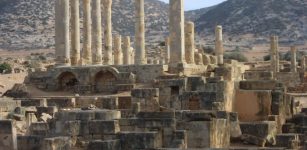 University Of Warsaw Archaeologists Return To Study Large Ancient City Of Ptolemais
Archaeology | Sep 8, 2023
University Of Warsaw Archaeologists Return To Study Large Ancient City Of Ptolemais
Archaeology | Sep 8, 2023 -
 Walls Of Uruk Built By Sumerian King Gilgamesh 4,500 Years Ago
Featured Stories | Nov 28, 2015
Walls Of Uruk Built By Sumerian King Gilgamesh 4,500 Years Ago
Featured Stories | Nov 28, 2015 -
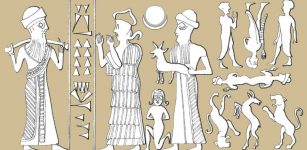 City Of Purushattum: Oldest Known Written Document Reveals History Of 4,500-Year-Old Silver City
Archaeology | Jun 4, 2017
City Of Purushattum: Oldest Known Written Document Reveals History Of 4,500-Year-Old Silver City
Archaeology | Jun 4, 2017 -
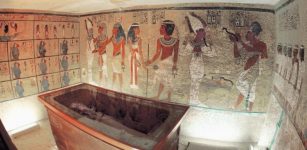 Non-Invasive Radar Will Search King Tutankhamun’s Tomb For Nefertiti’s Hidden Crypt
Civilizations | Sep 24, 2015
Non-Invasive Radar Will Search King Tutankhamun’s Tomb For Nefertiti’s Hidden Crypt
Civilizations | Sep 24, 2015 -
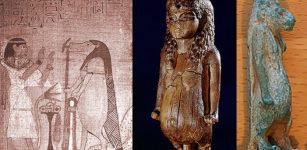 Taweret – Powerful Egyptian Hippopotamus ‘Household Goddess’ Guarded Childbirth, House, Sleep And Dispelled Evil Forces
Egyptian Mythology | Jul 16, 2018
Taweret – Powerful Egyptian Hippopotamus ‘Household Goddess’ Guarded Childbirth, House, Sleep And Dispelled Evil Forces
Egyptian Mythology | Jul 16, 2018 -
 Egyptians Mastered Medicine Thousands Of Years Ago
Civilizations | Oct 1, 2015
Egyptians Mastered Medicine Thousands Of Years Ago
Civilizations | Oct 1, 2015 -
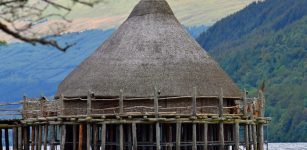 DNA Unravels Mysteries Of The Crannogs, Ancient Artificial Islands Older Than Stonehenge
Archaeology | Oct 10, 2022
DNA Unravels Mysteries Of The Crannogs, Ancient Artificial Islands Older Than Stonehenge
Archaeology | Oct 10, 2022 -
 Extraordinary Etruscan And Roman Treasure Trove Unearthed In San Casciano dei Bagni, Italy
Archaeology | Aug 12, 2022
Extraordinary Etruscan And Roman Treasure Trove Unearthed In San Casciano dei Bagni, Italy
Archaeology | Aug 12, 2022 -
 Study Of Ancient Skulls Sheds Light On Human Interbreeding With Neandertals
Archaeology | Aug 23, 2022
Study Of Ancient Skulls Sheds Light On Human Interbreeding With Neandertals
Archaeology | Aug 23, 2022 -
 One Of The Oldest Manuscripts Fragments Of The Famous Merlin Legend Discovered
Archaeology | Sep 2, 2021
One Of The Oldest Manuscripts Fragments Of The Famous Merlin Legend Discovered
Archaeology | Sep 2, 2021 -
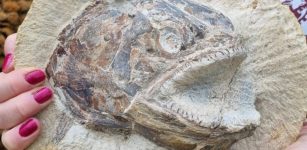 183-Million-Year-Old Fossils: Jurassic Marine World In A Farmer’s Field
Fossils | Jul 31, 2022
183-Million-Year-Old Fossils: Jurassic Marine World In A Farmer’s Field
Fossils | Jul 31, 2022 -
 Historic Shipwreck Margaret A. Muir Found In Lake Michigan, Wisconsin
Archaeology | Jul 29, 2024
Historic Shipwreck Margaret A. Muir Found In Lake Michigan, Wisconsin
Archaeology | Jul 29, 2024

